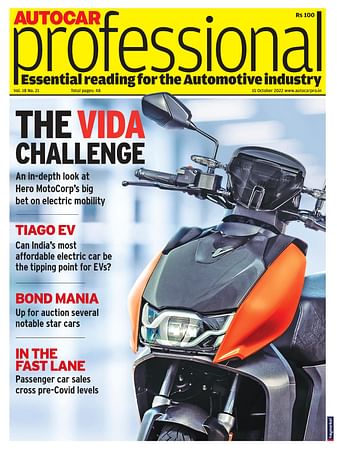Human robot cooperation takes a new leap of faith
Audi is expanding human‑robot cooperation through safe collaboration between man and machine without a protective fence for assembly of A4 and A5 models at the Ingolstadt plant.
The smart factory has come closer to reality at the Audi plant in Ingolstad in the form of a new robot colleague in the assembly of Audi A4 and A5 models. The latest development sees people and robots now working there side by side without a protective fence.
“Adhesive application with robot assistance,” abbreviated from the German as KLARA, provides support with the installation of roofs made of carbon fiber reinforced polymer (CFRP) in the new RS 5. For the first time, the German carmaker is using an HRC light robot in its main plant for applying adhesive in final assembly. Similar robots are already integrated into production in the body shops in Ingolstadt and Brussels as well as in engine assembly in Győr.
The functionality
As the first step, an employee places the carbon‑fibre reinforced polymer roof on a rotary table and tilts it. The application of adhesive is triggered by pressing and holding a button. An illuminated ring indicates when KLARA has precisely applied adhesive over a length of more than five metres.
The robot then signals that the roof is ready for installation. The employee takes the roof with the aid of a handling device and installs it in the car. The CFRP roof is optional equipment in the new Audi RS 5 Coupe and is significantly larger than comparable roof systems. A person would therefore not be able to apply the adhesive as reliably and accurately as KLARA.

Due to the integrated sensors, KLARA does not require a protective fence between man and machine. The robot recognises when a machine is touched by a human and automatically stops if there is any danger. It also indicates any disturbance with its illuminated ring, which then lights up red, thus helping to keep the working space safe.
No protective fence
Unlike conventional robots, KLARA does not require a protective fence, which means that the working spaces of human and machine blend into one. This saves considerable space at the assembly line and allows HRC to be integrated into the production line. With human-robot cooperation like this, employee safety has top priority at Audi.
The employee is in control, initiates the application of adhesive and can halt the process at any time. Sensors in the robot arm recognise when a human is touched and automatically stop any movement in the case of danger. KLARA also indicates any danger with the illuminated ring: It lights up red if there is any disturbance.
All equipment components were preassembled on a base plate. This allowed KLARA to be installed and put into operation within a short time. Integration took place without any interference in the existing assembly line. An alternative solution for applying adhesive to the new roofs would only have been possible with far greater effort and expense.
Also read: Bajaj Auto uses collaborative robots to enhance productivity
RELATED ARTICLES
Sept 2024 From R&D incentives to EV infrastructure: What auto components industry expects from Budget 2024
Sept 2024 From R&D incentives to EV infrastructure: What auto components industry expects from Budget 2024
US car majors hit the brakes on driverless cars
Ford Motor and Volkswagen to close self-driving startup Argo AI, due to lack of technology and clear regulations.
Autoliv and Geely to develop advanced safety tech for future vehicles
Scope of cooperation includes safety for high-level autonomous driving, intelligent steering wheel technology, a 360deg ...






 By Autocar Pro News Desk
By Autocar Pro News Desk
 05 Aug 2017
05 Aug 2017
 4354 Views
4354 Views












